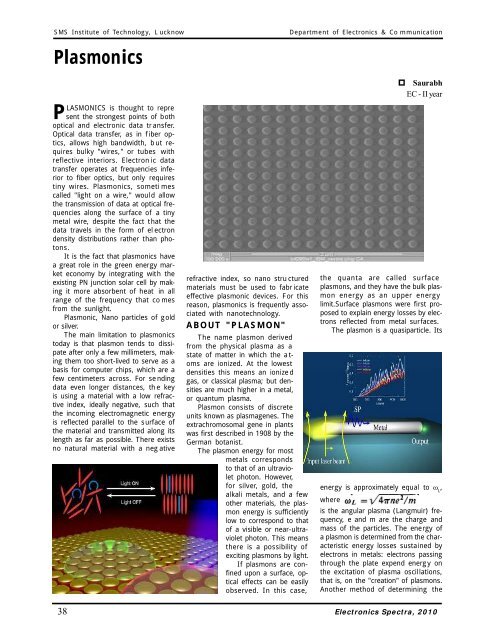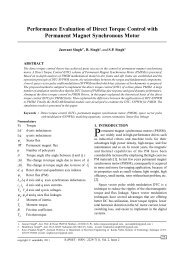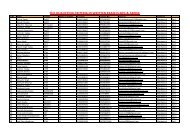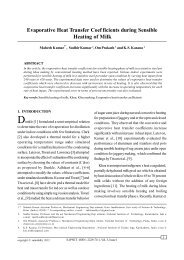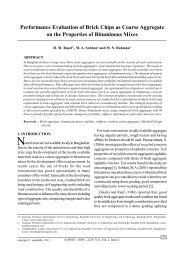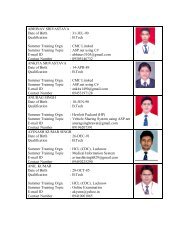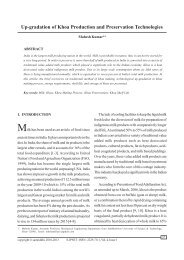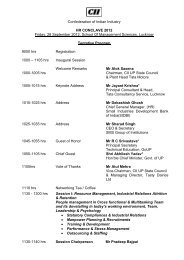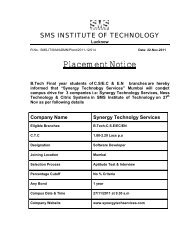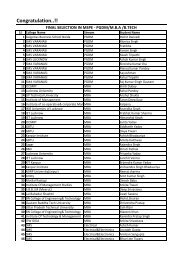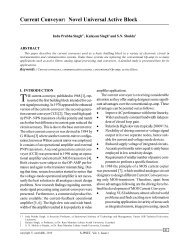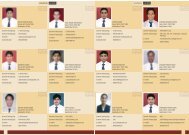Electronics Spectra - SMS Lucknow
Electronics Spectra - SMS Lucknow
Electronics Spectra - SMS Lucknow
Create successful ePaper yourself
Turn your PDF publications into a flip-book with our unique Google optimized e-Paper software.
<strong>SMS</strong> Institute of Technology, L ucknow<br />
Department of <strong>Electronics</strong> & Co mmunication<br />
Plasmonics<br />
PLASMONICS is thought to repre<br />
sent the strongest points of both<br />
optical and electronic data tr ansfer.<br />
Optical data transfer, as in f iber optics,<br />
allows high bandwidth, b ut requires<br />
bulky "wires," or tubes with<br />
reflective interiors. Electron ic data<br />
transfer operates at frequencies inferior<br />
to fiber optics, but only requires<br />
tiny wires. Plasmonics, someti mes<br />
called "light on a wire," would allow<br />
the transmission of data at optical frequencies<br />
along the surface of a tiny<br />
metal wire, despite the fact that the<br />
data travels in the form of el ectron<br />
density distributions rather than photons.<br />
It is the fact that plasmonics have<br />
a great role in the green energy market<br />
economy by integrating with the<br />
existing PN junction solar cell by making<br />
it more absorbent of heat in all<br />
range of the frequency that co mes<br />
from the sunlight.<br />
Plasmonic, Nano particles of gold<br />
or silver.<br />
The main limitation to plasmonics<br />
today is that plasmon tends to dissipate<br />
after only a few millimeters, making<br />
them too short-lived to serve as a<br />
basis for computer chips, which are a<br />
few centimeters across. For se nding<br />
data even longer distances, th e key<br />
is using a material with a low refractive<br />
index, ideally negative, such that<br />
the incoming electromagnetic energy<br />
is reflected parallel to the surface of<br />
the material and transmitted along its<br />
length as far as possible. There exists<br />
no natural material with a neg ative<br />
refractive index, so nano stru ctured<br />
materials must be used to fabr icate<br />
effective plasmonic devices. For this<br />
reason, plasmonics is frequently associated<br />
with nanotechnology.<br />
ABOUT "PLASMON"<br />
The name plasmon derived<br />
from the physical plasma as a<br />
state of matter in which the a t-<br />
oms are ionized. At the lowest<br />
densities this means an ionize d<br />
gas, or classical plasma; but densities<br />
are much higher in a metal,<br />
or quantum plasma.<br />
Plasmon consists of discrete<br />
units known as plasmagenes. The<br />
extrachromosomal gene in plants<br />
was first described in 1908 by the<br />
German botanist.<br />
The plasmon energy for most<br />
metals corresponds<br />
to that of an ultraviolet<br />
photon. However,<br />
for silver, gold, the<br />
alkali metals, and a few<br />
other materials, the plasmon<br />
energy is sufficiently<br />
low to correspond to that<br />
of a visible or near-ultraviolet<br />
photon. This means<br />
there is a possibility of<br />
exciting plasmons by light.<br />
If plasmons are confined<br />
upon a surface, optical<br />
effects can be easily<br />
observed. In this case,<br />
the quanta are called surface<br />
plasmons, and they have the bulk plasmon<br />
energy as an upper energy<br />
limit.Surface plasmons were first proposed<br />
to explain energy losses by electrons<br />
reflected from metal surfaces.<br />
The plasmon is a quasiparticle. Its<br />
energy is approximately equal to L<br />
,<br />
where<br />
Saurabh<br />
EC - II year<br />
is the angular plasma (Langmuir) frequency,<br />
e and m are the charge and<br />
mass of the particles. The energy of<br />
a plasmon is determined from the characteristic<br />
energy losses sustained by<br />
electrons in metals: electrons passing<br />
through the plate expend energy on<br />
the excitation of plasma oscillations,<br />
that is, on the "creation" of plasmons.<br />
Another method of determining the<br />
38 <strong>Electronics</strong> <strong>Spectra</strong>, 2010


